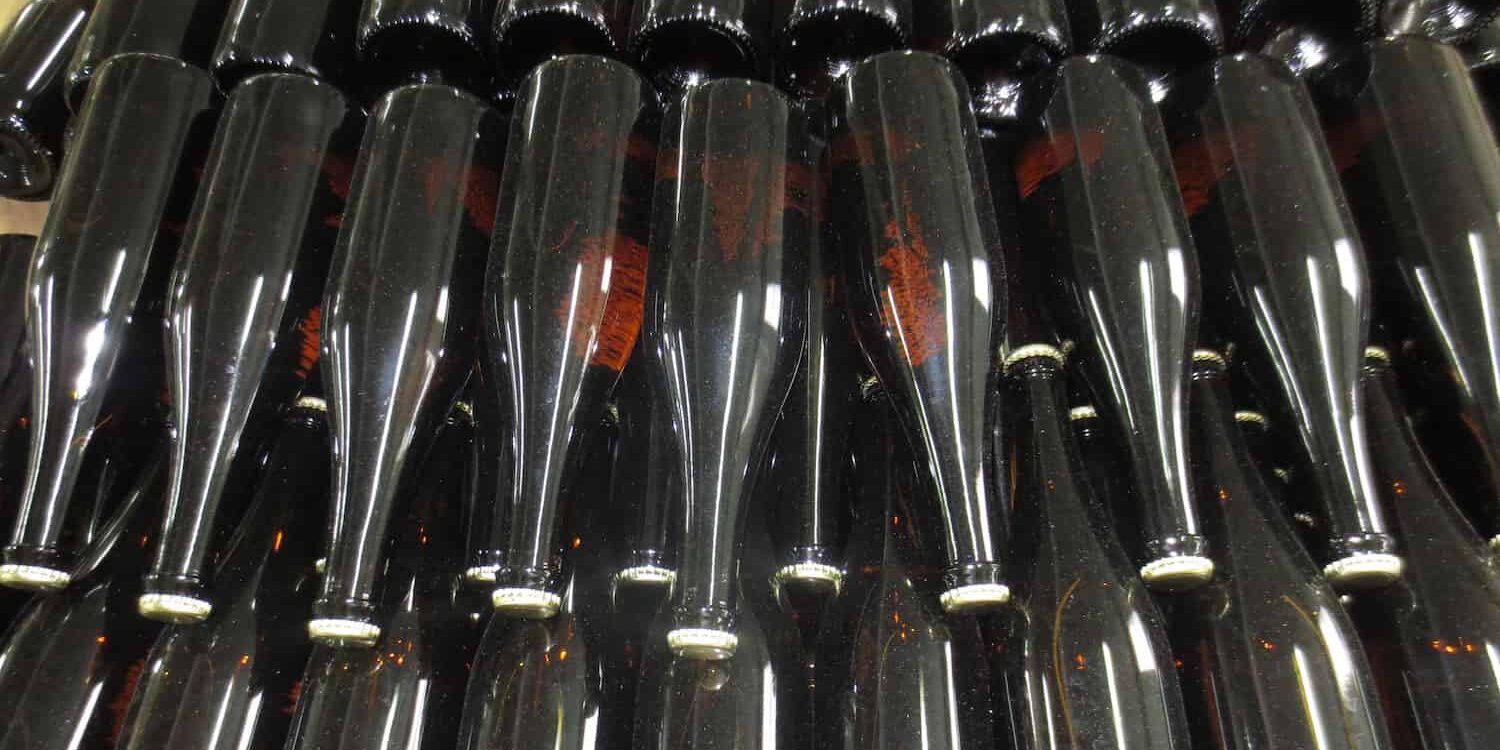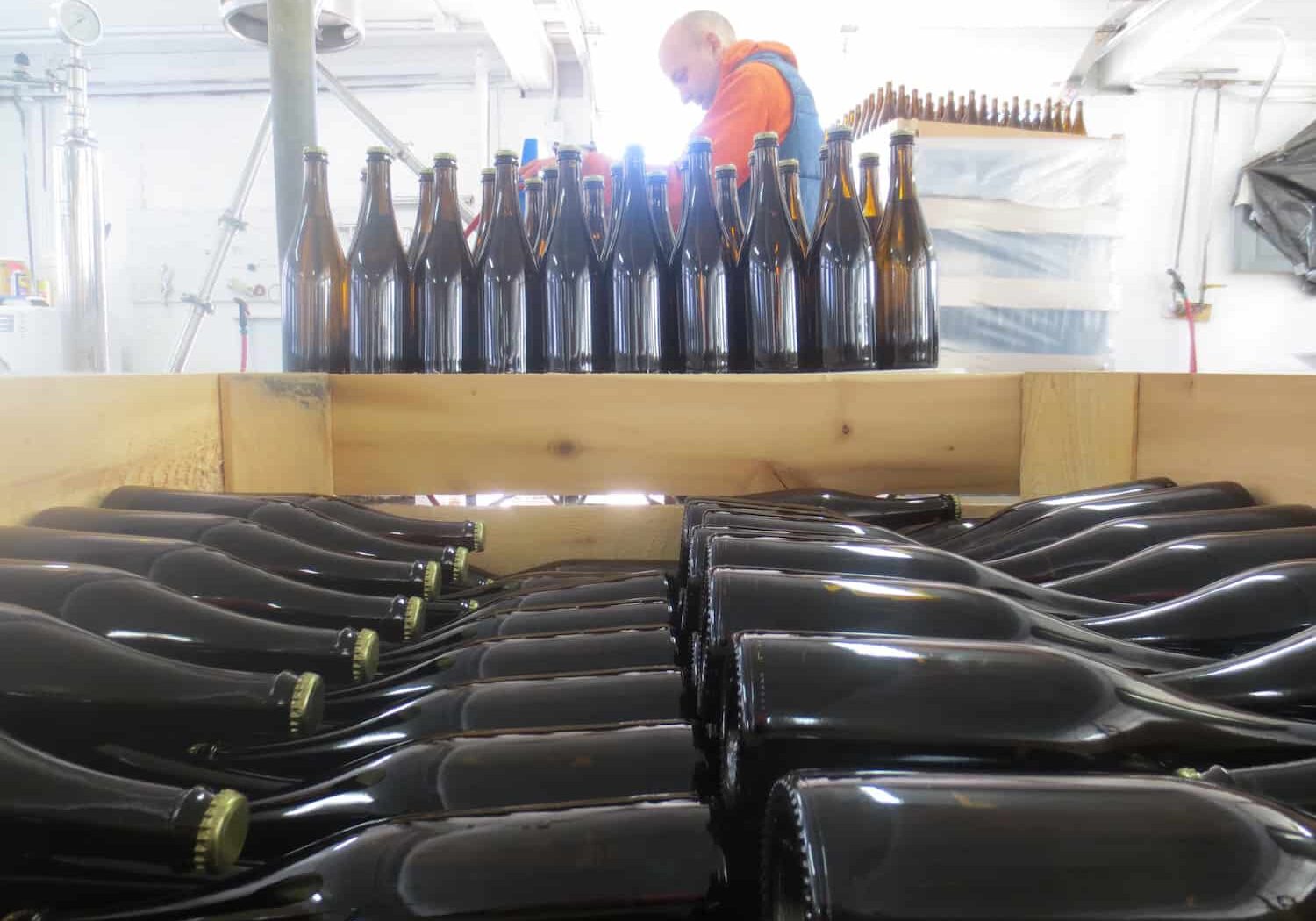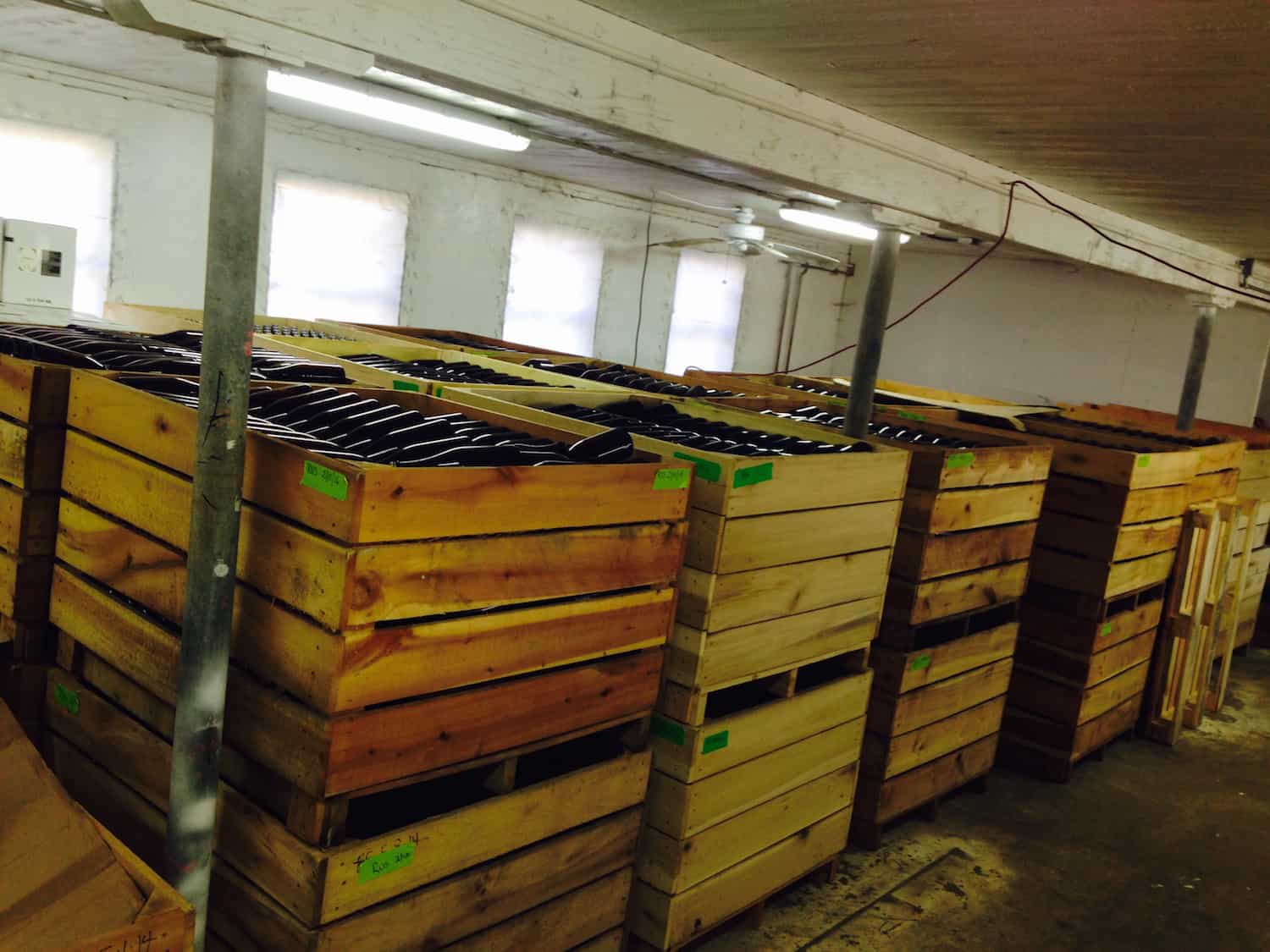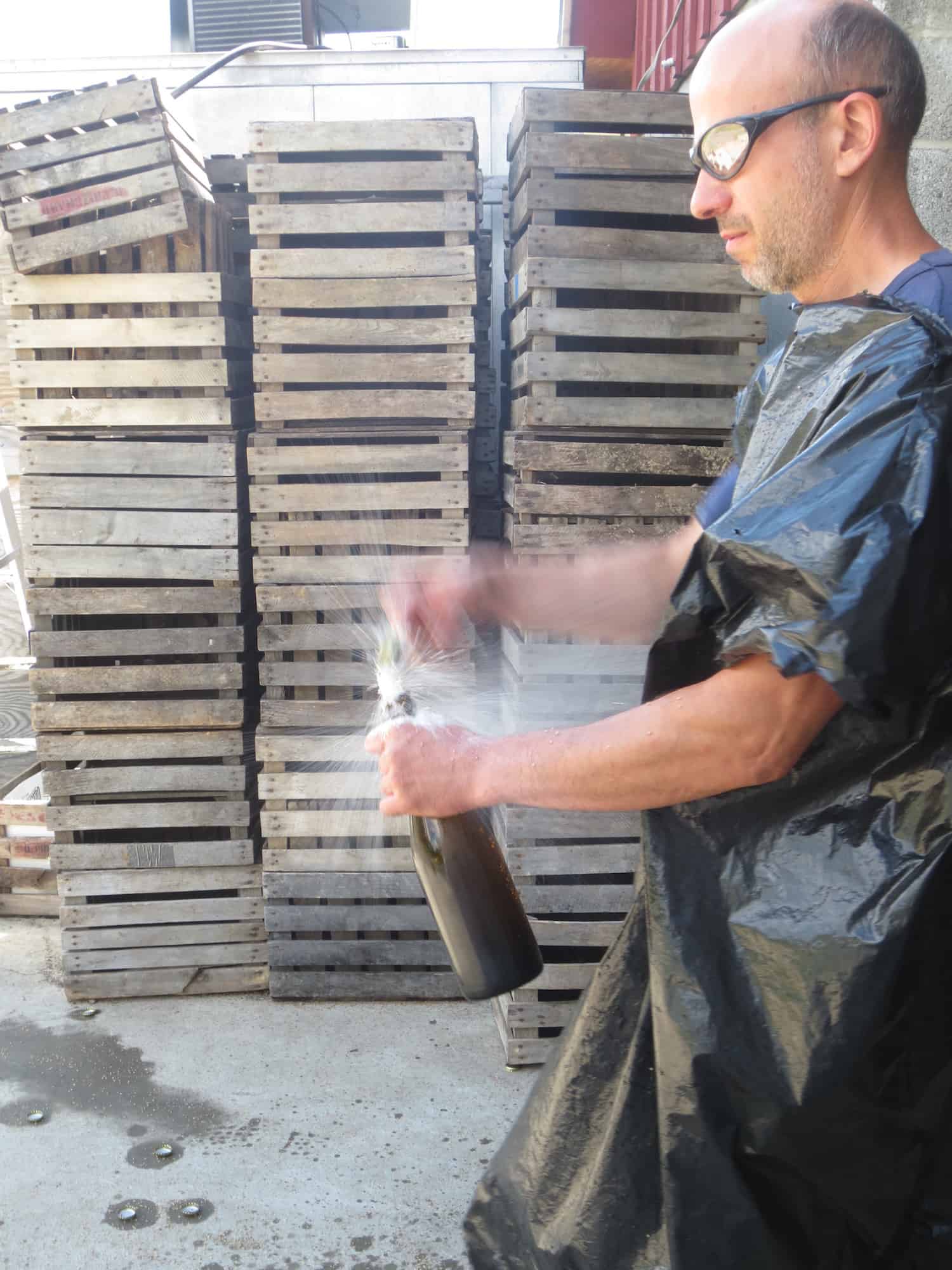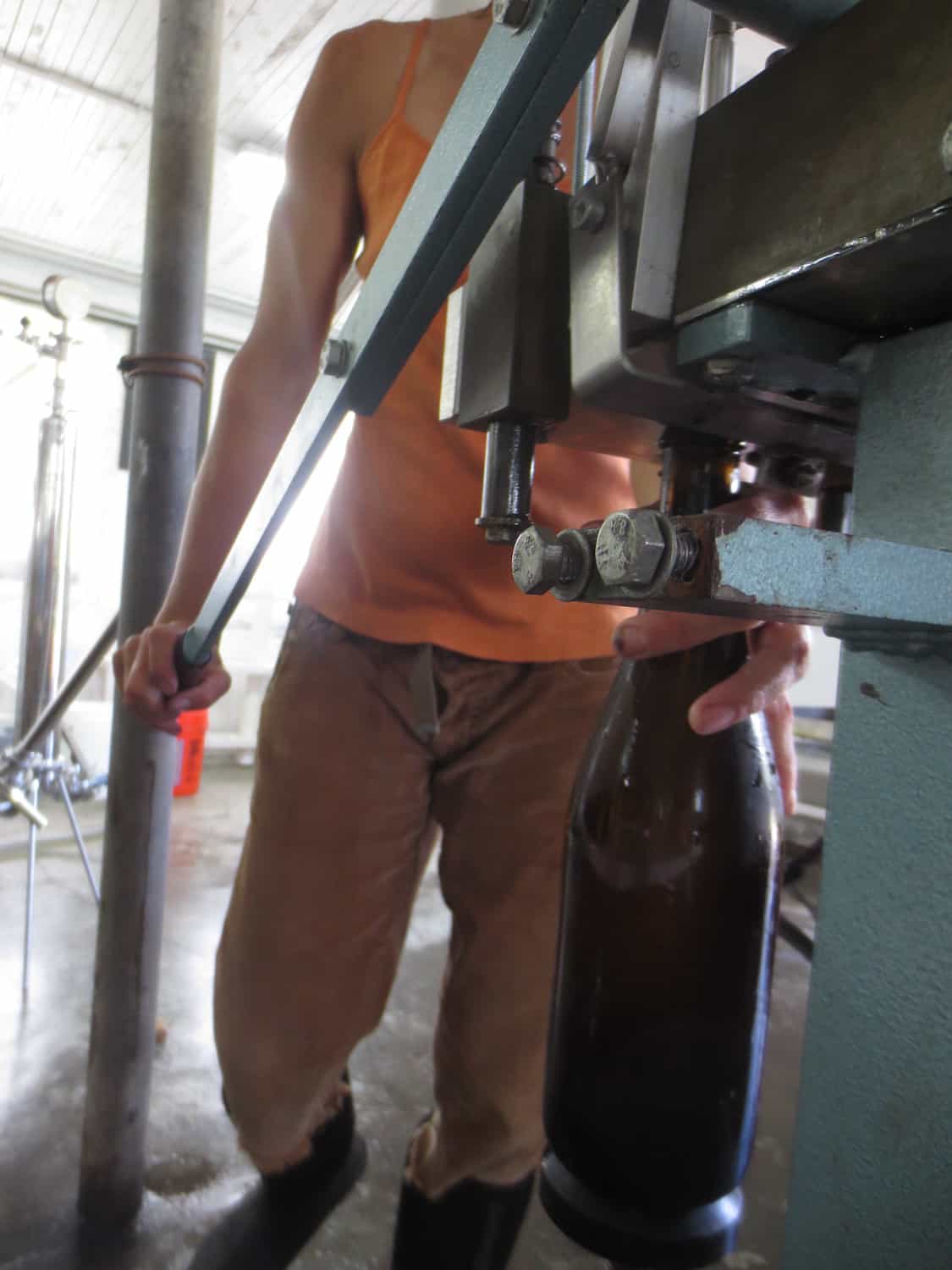Making Bubbly Cider
SHORT STORY:
After making a still cider, we bottle it with a tirage -dose of yeast and sugar and close the bottle with a crown cap. After around 6 months, it has fermented a second time in the bottle and is bubbly. We disgorge the yeast, and add a dosage-bring the volume back up to 750 ml and close the bottle with a cork and wire hood. Sounds easy? Below is the longer version.
LONG STORY:
Imagine you have tanks of still cider that have been racked and blended to produce the target profile – an intense endeavor in itself (read here) and you want that cider to be in the bottle, bubbly, without sediment, stable (it won’t do strange things on the store shelf like undergo a malolactic fermentation or worse), perhaps with a little sweetness, and with a champagne cork and wire hood. Here is how we do it.
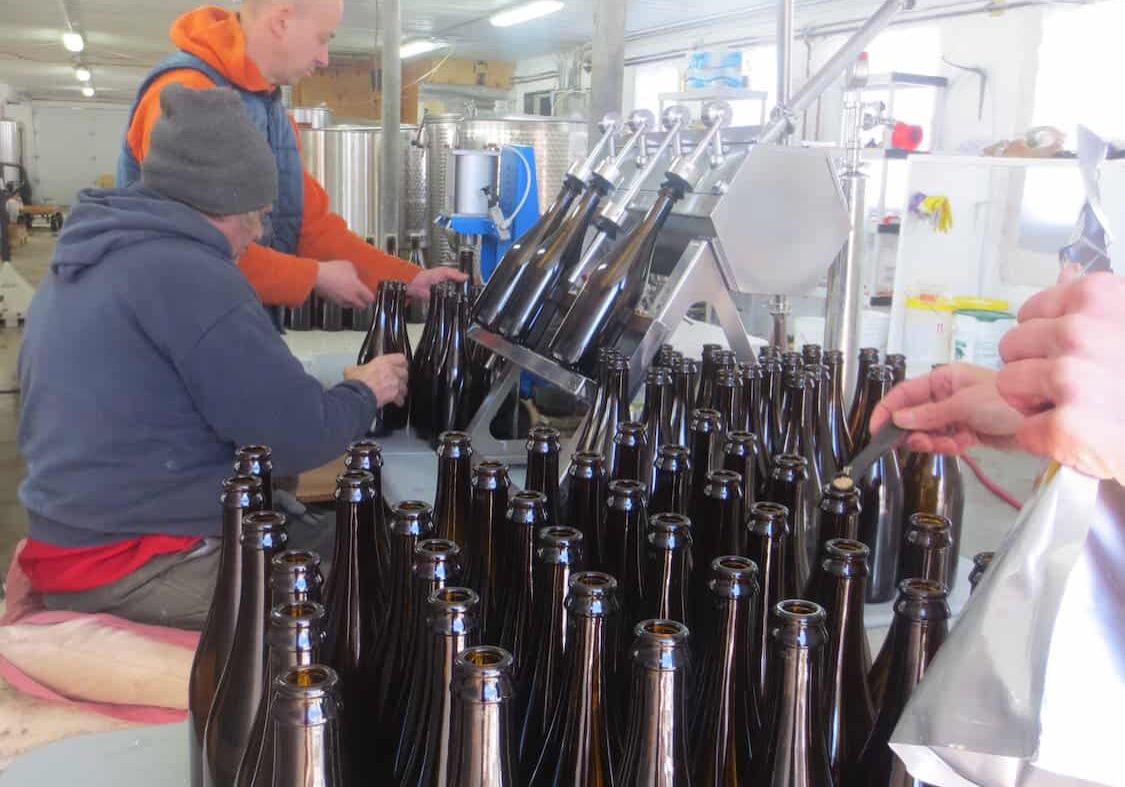
It takes three people to bottle the bubbly cider.
The doser (who spoons in the yeast), the bottler (who takes the bottles on and off the bottler) and the crown capper (who puts on the crown caps and stacks the bottles in bins).
Here you see Celia spooning in the yeast, James filling the bottles with the bottler and me (Ezra) on the capper.
Hopefully, at this point, everything is running smoothly and we are rocking – Levon Helm is blasting on the stereo and we are moving fast. It’s work but the preparation was a lot harder.
First, I prefiltered all the cider through a DE filter, which takes out the majority of any filterable solids. Then, usually on the morning of bottling, we (usually Celia) spend 4 hours setting up the bottling line:
- setting-up the plate filter and the sterile filter
- connecting the stainless steel piping from the sterile filter to the gravity tank to the bottler
- sterilizing the bottling line in place.
Then there is also stirring in the precise amount of sugar to the tanks to achieve 10 grams of sugar per bottle and bubble testing the sterile filter to make sure it will do its job. After all of that, we are happy to be all together talking about the end of the world with James.
Here I am using the pneumatic capper. I love this job and this tool because of the way we used to do it. When the Cider was at Indian Creek -- James’ brother’s farm – we used the Red Baron capper to do thousands of bottles.
On that scale it felt like a little plastic toy: I used to break off the tops of the bottles and it also did a poor job sealing the bottles. One disaster story involves the Red Baron and the loss of ½ of our Northern Spy one year.
On that occasion we put the bottled Spy in Steven’s Greenhouse in February because the Cidery was too cold for the secondary fermentation. When we took a look in the greenhouse a few weeks after bottling, the heat of the greenhouse and the poor fit of the caps left many of the bottles almost empty, from the cider fermenting and percolating out beneath the crown cap.
We stack the bottles on their sides because: it’s fast, they fit perfectly 4 across in these bins, and it allows for the yeast to spread out and have more contact with the cider.
As we move the cider into bottles we move the fermentation tanks upstairs, but still we are short on space. So we stack the bins two high: 22,000 bottles (plus our still ciders) take up a lot of room.
We bottle in February and the barn is uninsulated except for the ceiling (see barn story) so getting the temperature right is an issue. The only heat source we have is a pellet stove and it usually does the trick. A cool, secondary fermentation, Autumn believes, results in the smallest, most elegant bubbles.
Here is the action shot of me disgorging and it’s tempting to be narcissistic about this stage and say its all me, me me. But once again, the preparation and the execution involve a lot of other person hours.
First, all of those bottles have to be flipped up and put in our homemade bottle crates – 50 lbs apiece -- wheeled out to the coolers and stacked. That step is necessary for the yeast to drop to the mouth of the bottles and because the cider needs to be chilled down so I lose a minimal amount of it when I pop the cap.
For this second time around on the bottling line we need four people (and people ask why our cider is so expensive): the disgorger, the bottler, the corker and the wire hooder.
Once again, there is a 4 hour set-up of the bottling line because we sterile filter topper (a still cider) and top off each bottle after I disgorge the yeast.
Plus, someone has to wrap their mind around calculating how much SO2 to add to the topper to get an addition of 30 ppm in the bottle, given a certain loss from disgorging.
Most of our ciders are completely dry, but for the Darling Creek, where we return sugar to adjust the bottle to 1½% sugar, a second calculation has to be made.
We manually cork all of our bottles. The corker tool has two handles: one to push the jaws and squeeze the cork and the other to push the cork in around ½ an inch. The person corking, while juggling these two handles, the bottles and the corks, has to keep one hand sterile, using it only to pick up the corks. Wire hooding is also a nice repetitive-fatigue type of job, so the corker and hooder usually trade jobs during the day, while also spraying off the bottles.
Yay. It’s 5:45. Time to drain the bottling line (saving the cider) and run water through it, write down the production numbers, sweep up the bottle caps (we bring them to a scrap metal processor) and spray down the cidery from the disgorged yeast and cider. And then maybe a glass of cider in the cozy house.
